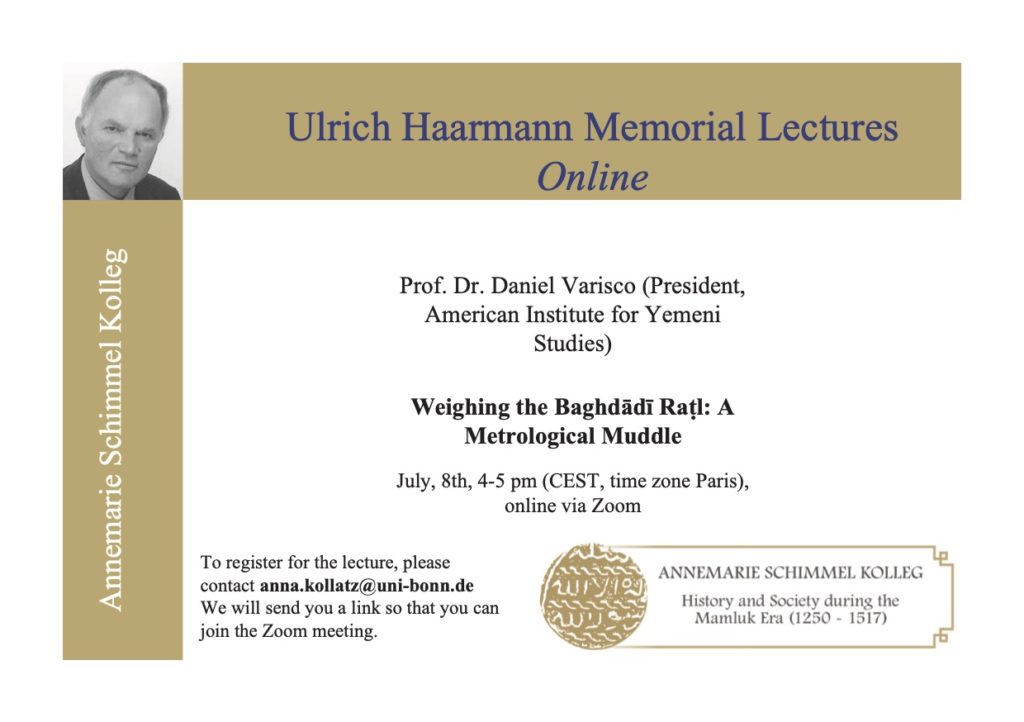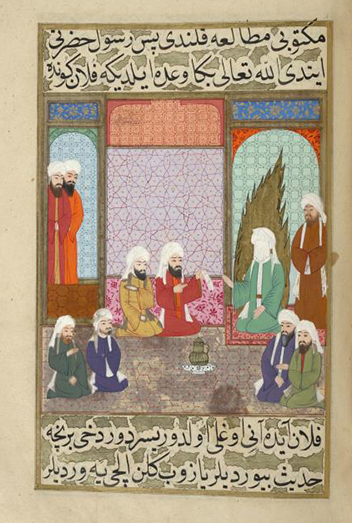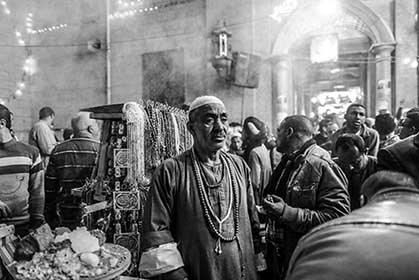
A fascinating commentary by Ahmed El Shamsy on the ISIS flag logo as a hoax from a 19th century forged letter attributed to Muhammad. Check it out here.

A fascinating commentary by Ahmed El Shamsy on the ISIS flag logo as a hoax from a 19th century forged letter attributed to Muhammad. Check it out here.
On Thursday, July 8 , 2021 (4 pm Berlin time, 10 am New York time) I will be giving an online presentation on my search for the metric weight of the Baghdadi ratl, the most widespread measure for international trade in the Red Sea/Indian Ocean network during the Abbasid and Mamluk/Rasulid eras. Although several Western scholars since the mid-19th century have suggested the metric measure of the dirham, a basic unit of the ratl, there is disagreement. Most of the research has focused on the numismatic use of weights with much less on use in the market. Western scholars have ignored the Islamic legal interpretation of two measures used by the Prophet Muhammad (the sa‘ and mudd), which were later interpreted by Muslim religious scholars according to the Baghdadi ratl for zakat and alms. My talk is more of a prolegomena to future study of Islamic metrology than a definitive rendering. I would be pleased to send a copy for comments to anyone interested.


There is an excellent discussion of the origins and extent of apostasy laws in Islamic contexts by Dr. Ahmet Kuru, Porteous Professor of Political Science at San Diego State University in the online forum Qantara.

The image of an Islamic scholar engaged in memorization, collection or engagement with the many traditions (hadith, singular) of the Prophet Muhammad is invariably that of a male. After all, one of the most important collections is that of the Persian Muhammad b. Ismail al-Bukhari (d. 870 CE). But over the centuries there have been thousands of Muslim women who studied these traditions. For example, one of these scholars, Zaynab bint al-Kamal, is reported to have taught some 400 hadith works in 13th century Damascus. Many of these women are known, but most have not been recognized outside biographical sources.
Earlier this year Dr. Mohammed Akram Nadwi from the Cambridge Islamic College published a 43-volume work, al-Wafa’ bi-asma’ al-nisa’ (Biographical Dictionary of Women Narrators of Hadith) on over 10,000 female hadith transmitters and scholars. The text is currently in Arabic, but there is an English translation of the first volume available on Amazon.
For a talk in Arabic on Youtube about his book, click here.

8 Rules of Engagement Taught by the Prophet Muhammad
Extremism ‘experts’ are everywhere these days. Assertions thrive about what Shariah law allows, especially when it comes to warfare and ‘Jihad’. Two very unlikely bedfellows, Islamophobes and extremists, have taken up one allegation, that Islam is violent, and run with it. They both misquote Islamic sources to prove their shared fantasies, and to good effect, with media outlets falling over themselves to give them a platform. This convenient lie has become the Blood Libel of the Muslims, which is spread by various groups to achieve their own agendas.
So here is a list of actual rules of engagement taken from Islamic law, together with their original sources. This is what forms the basis of what Muslims believe and follow. These 8 laws expose the ‘Islam is violent’ line as lazy and shamefully dishonest.
N.B. War is unfortunately an inevitable part of civilization and at times countries need to respond to aggression. Islam allows the use of force to stop evil and bring security to a country’s citizens therefore a set of laws pertaining to war has been laid out by the Prophet Muhammad himself.
What follows are mainstream laws of Islam as taught by the orthodoxy of the religion. This is what the vast majority of Muslims around the world observe as their religion. It does not mean however, that all those who claim to be Muslim actually follow orthodox Shariah laws. Such groups and individuals would rightly be labelled as heretics for inventing new beliefs that run counter to explicit statements found in original sources of Islamic law. Continue reading Rules of Engagement

The following illustration is preserved in the New York Public Library. It features Muhammad receiving a letter from Bazan, the king of Yemen. It was created for Murad III, Sultan of the Turks, 1546-1595 by Darîr Erzurumî, fl. 14th cent.

Time Magazine has a photographic essay on “Exploring the Mawlids of Egypt.”

Throughout history in almost every culture there has been the sordid practice of beheading. John the Baptist lost his head to King Herod. Louis XVI lost his under a French guillotine. But few would argue that beheading is just today, no matter what the rationale. The recent choreographed beheadings of ISIS have brought the issue once again to a head. Unfortunately, such video propaganda only feeds Islamophobia, even though there is no legitimate justification for such a practice in Islamic law or the sunna of the Prophet. Not one of the companions of the prophet is recorded as having decapitated an enemy; certainly the Prophet himself never committed such an act. Indeed, the blood-soaked ISIS spectacles are pornographic.
I recently came across a lengthy fatwa on the Islamic Sham Organization in response to the question if beheading is sanctioned in Islam. I attached it below as it is well worth reading.
السؤال:
ما Øكم Ø°Ø¨Ø Ø£Ø³Ø±Ù‰ الأعداء بالسكين؟ وهل هو Ùعلاً سنة نبوية يمكن اتباعها؟
الجواب:
الØمد لله، والصلاة والسلام على رسول الله، وبعد:
Ùقد أرسل الله سبØانه وتعالى رسولَه بالهدى والعدل والرØمة، Ùكان مما شرعه الإØسان ÙÙŠ استيÙاء العقوبات والØدود والقصاص، بأن تكون بأيسر طريقة وأسرعها، ومنعَ من كل ما Ùيه تعذيب وتمثيل، كتقطيع الأعضاء ÙˆØ§Ù„Ø°Ø¨Ø Ø¨Ø§Ù„Ø³ÙƒÙŠÙ†ØŒ Ùإنها من الطرق الشنيعة والمنكرة ÙÙŠ القتل، وبيان ذلك Ùيما يلي:
Continue reading Fatwa on Beheading